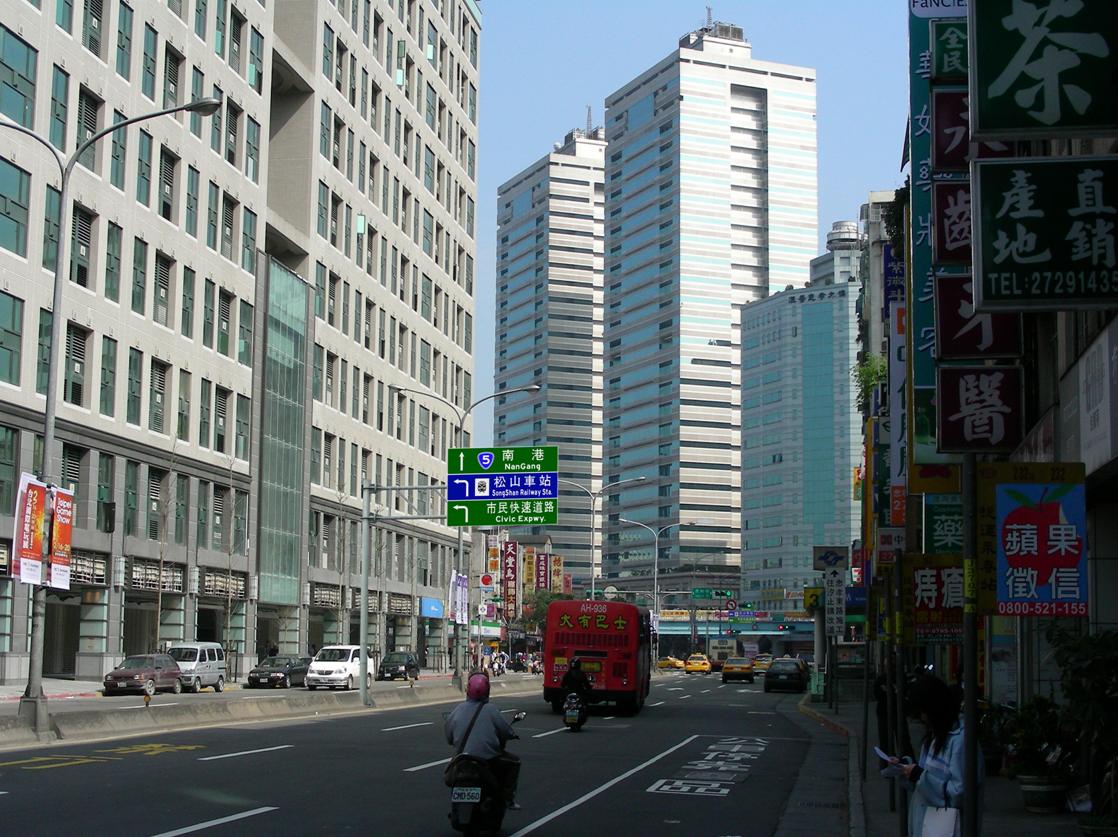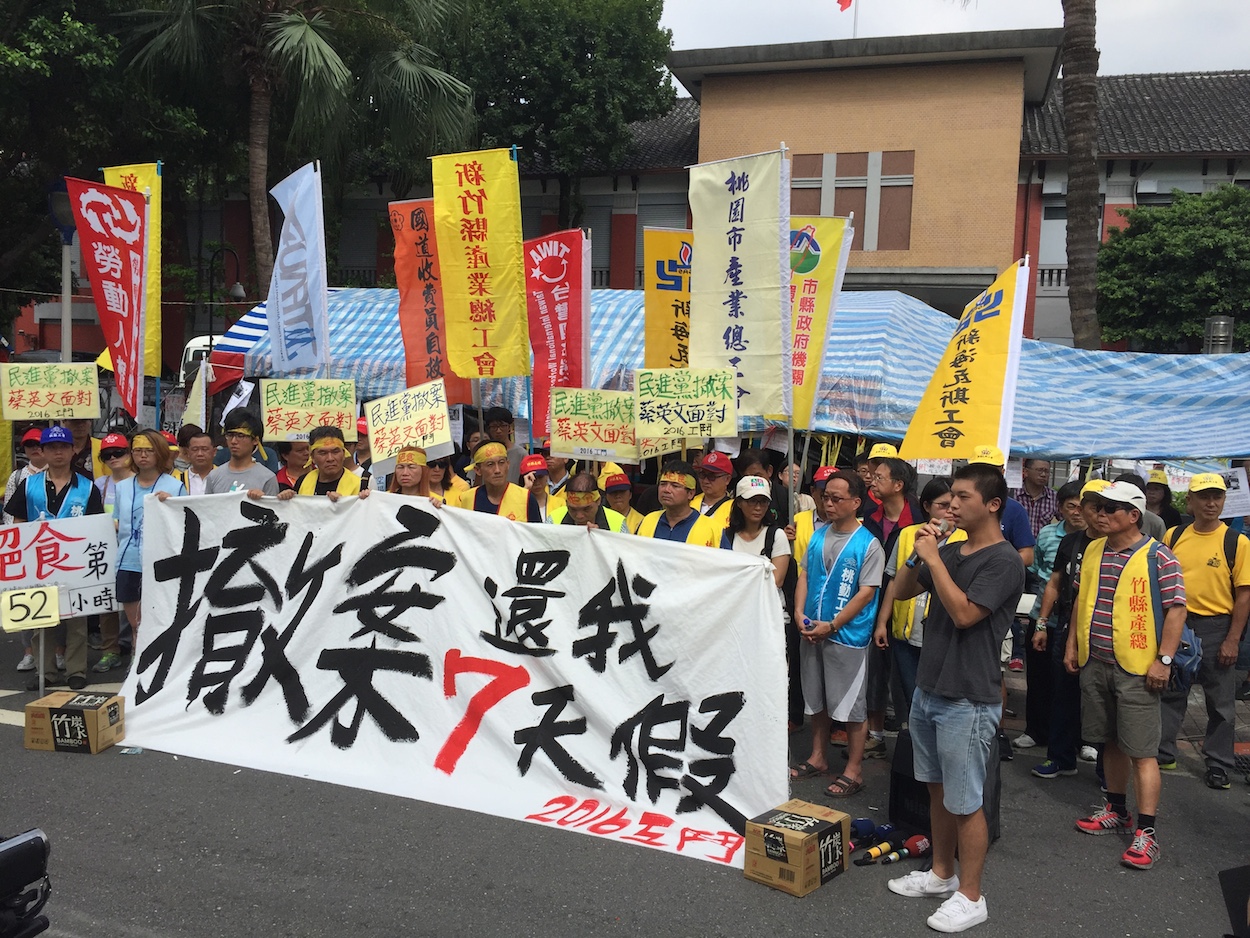by Brian Hioe
語言:
English
Photo Credit: 毛貓大少爺/WikiCommons/CC BY-SA 2.0
THERE HAS BEEN increased criticism of the make-up holiday system in Taiwan after a series of six-day works in the last two months. Current provisions specify that when a public holiday falls on a Tuesday or Thursday, the government moves the date of the holiday to create a long weekend, but then a Saturday in another week becomes a work day.
Although this is not a new practice, that there were two six-day workweeks in February and one in March have led to a wave of public criticism. The present system has been in place since 2013.
As a result, the Directorate-General of Personnel Administration, which coordinates public holidays in Taiwan, has stated that it will take measures to ensure that there are no more than three make-up days per year. The Personnel Administration has stated that it is unusual for there to be so many make-up days in one year and that there will only be three make-up days through 2029.
 Photo credit: Pfry19855/WikiCommons/CC
Photo credit: Pfry19855/WikiCommons/CC
With increased focus on the issue, pan-Green and pan-Blue legislators have called for increasing the number of public holidays from the current 11 to as much as 24. The NPP party caucus has also taken the stance that there should be nineteen public holidays, an increase of eight. Moreover, the different political parties have taken different stances on which public holidays should be commemorated, in line with their differing views on history. The KMT calls for the commemoration of the shelling in Kinmen, while both the DPP and KMT have proposed commemorating holidays pertaining to Taiwan’s democratization, such as the Kaohsiung Incident, the lifting of martial law, and Freedom of Speech Day.
Taiwan consistently works among the longest working hours in the world. In 2019 and 2020, Taiwan worked the fourth longest working hours in the world. Certainly, the makeup day system contributes to the number of hours that Taiwanese work. Despite how many hours that Taiwanese work, this has not served to reduce social inequality–it currently requires one to note eat or drink for fifteen years to be able to afford a home in Taipei, and Taiwan continues to face issues with unaffordable real estate, in part due to the wealthy hoarding properties as a form of investment. Though there have been increases in the minimum wage in past years, this has not alleviated structural inequality in Taiwanese society, particularly for young people that lack the opportunities their parents had.
Indeed, the issue of cuts to public holidays in fact provoked significant protests in the early years of the Tsai administration. The Tsai administration moved to cut public holidays from 19 to 12 in its first term, at the same time as new arrangements were introduced allowing for one set day off per week and a “flexible rest day” in which workers could still be made to work, changing the Labor Standards Act.
At the time, this provoked months of protests, including an occupation outside of the Presidential Office and several hunger strikes, with protests occurring on a scale not seen since the Sunflower Movement and reaching their peak in 2018. Nevertheless, protests against the Tsai administration died down after the 2018 elections. As the KMT did well in these elections, this stoked significant fears, leading some of those involved in the labor demonstrations to side with or join with the DPP.
 Demonstration against cuts to public holidays in 2016. Photo credit: Brian Hioe
Demonstration against cuts to public holidays in 2016. Photo credit: Brian Hioe
Consequently, with the decline in labor protests since then–as well as inroads made into co-opting traditional labor unions by the KMT since then, particularly with the co-optation of “Autumn Struggle” for KMT demands regarding US pork–there is not sufficient momentum for labor demonstrations along the lines of the protests that took place.
As such, there is not momentum for any push by organized labor for restoring public holidays or for fewer working hours in Taiwan. Instead, what one primarily sees is political parties hoping to electorally gain by advocating an increase in public holidays.
Indeed, the DPP may hope to electorally benefit in the short term from making such proposals as well. Nevertheless, during the time that the DPP aimed to change the Labor Standards Act and cut public holidays, it was pressured by conglomerates and business interests to make such changes. If the DPP were, in fact, to try and increase the number of public holidays, one imagines that it would again be susceptible to this pressure.

